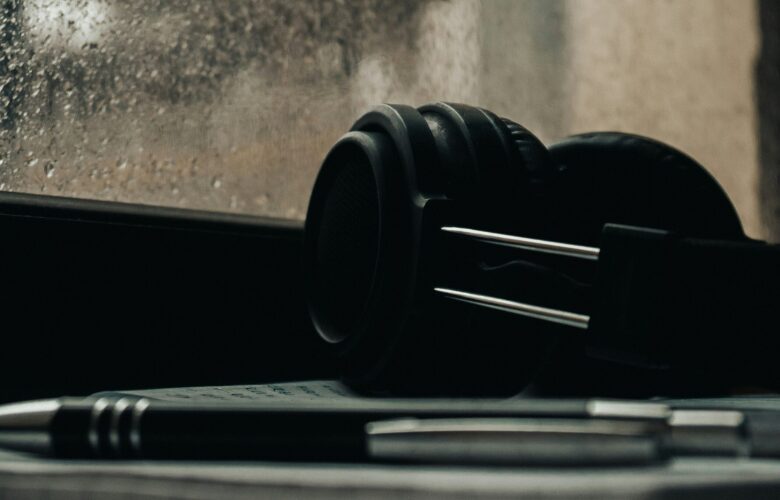
Last month I took a brief look into some routines I’ve developed that help me feel centered to better reach my full potential as a mix engineer. In it, I mentioned the importance of solidifying your understanding of the music to achieve the most impactful, distraction-free mix. Here we highlight how I approach learning music before a show or tour to achieve this goal.
When I ask my mentors what I should do to improve my mixes, this is usually their number one comment: proactive, intentional listening. But how do you listen, and how do you commit that to memory? When it comes to tour prep, it helps me if I create playlists based on the setlist or discography of the artist, and refer to it several times a day. Outside of sitting down to actively listen, I also will let it run in the background while I’m doing other activities. I find ways to quiz myself on the arrangements, becoming aware of a few key elements throughout the song and other fundamental elements of the mix.
For me, being proactive has translated into a two-fold process. I have duality as a musician, growing up both in the bluegrass community and developing retention for pitches and rhythm from a young age and later learning how to correlate that to sheet music through classical studies. The second kind of musicianship taught me so much about how to notate musical information, long before ever becoming a tech. I’ve bridged my career as a musician and as a tech by learning how to transcribe what I hear to sheets of paper.
If you have a musical background, visualization in this manner can be powerful. This can look like simply being able to learn how to notate the chord progressions, keys, and tempo, or just identifying what stands out throughout the listening process and subsequently writing it down. Even shorthand can be impactful. Make any and every attempt to understand the entirety of the arrangement and understand each tiny piece of it like the back of your hand.
I also find it helpful to find meaningful associations of the song. Other than the black-and-white analysis of the music, you must be able to bridge the gap between what you’re hearing to the pieces of the sound that resonate with your human experience. Research the music or artist to understand their intention and ask the musicians for information regarding the show. What is one player’s role? When are their solos, or when do they play something that they deem show critical? Maybe your steel guitar has a tiny little lick in the verse that parallels the emotions the singer is trying to convey. You should emphasize that. Show that you have a comprehension of what they’re creating. And if you have access to multitracks, you can use these to help you dissect each element and invite the players into the conversation as you prepare to help them deliver their show.
In conclusion, take time for yourself before having your hands on faders to learn the music. Doing research like this can help provide you with a toolset to make decisions quickly and with intention. After all, we have so many resources available at our fingertips and within our community that can help us achieve the goal of a distraction-free, artistic mix. Make sure you keep listening and find a method that works for you so that you can continue excelling and delivering top-tier mixes.


The mission of SoundGirls.org is to inspire and empower the next generation of women in audio. Our mission is to create a supportive community for women in audio and music production, providing the tools, knowledge, and support to further their careers. SoundGirls.Org was formed in 2013 by veteran live sound engineers Karrie Keyes and Michelle Sabolchick Pettinato and operates under the Fiscal Sponsorship of The California Women’s Music Festival, a 501(c)3 non-profit organization. In 2012, Karrie and Michelle participated in the “Women of Professional Concert Sound” panel at the AES Conference in San Francisco. The panel was hosted by the Women’s Audio Mission (WAM) and moderated by WAM founder Terri Winston. Terri brought together five women working in live and broadcast audio. The groundbreaking panel (which also included Jeri Palumbo, Claudia Engelhart and Deanne Franklin), provided young women and men a glimpse into life on the road, tips and advice, and a Q & A with the panelists. More importantly though, was how incredibly powerful the experience was for the panelists. We had all been in the business for 20 years or more, yet most of us had never met before that day and within minutes we bonded like long-lost sisters. We were struck by how similar our experiences, work ethics, and passions were and wondered why our paths had never crossed and how our careers would have been different had we been there to support each other through the years. Each of us are strong on our own, but together we were even stronger and a powerful force. We were empowered. Each of us had been asked hundreds of times in our careers: Are there other women doing sound? How did you get into sound? How would a young woman go about getting into sound? Through creating SoundGirls.Org, we hope to establish a place for women working in professional audio to come for support and advice, to share our success and failures, our joys and frustrations, and for empowerment and inspiration.
Read Full Profile© 2021 TheatreArtLife. All rights reserved.

Thank you so much for reading, but you have now reached your free article limit for this month.
Our contributors are currently writing more articles for you to enjoy.
To keep reading, all you have to do is become a subscriber and then you can read unlimited articles anytime.
Your investment will help us continue to ignite connections across the globe in live entertainment and build this community for industry professionals.